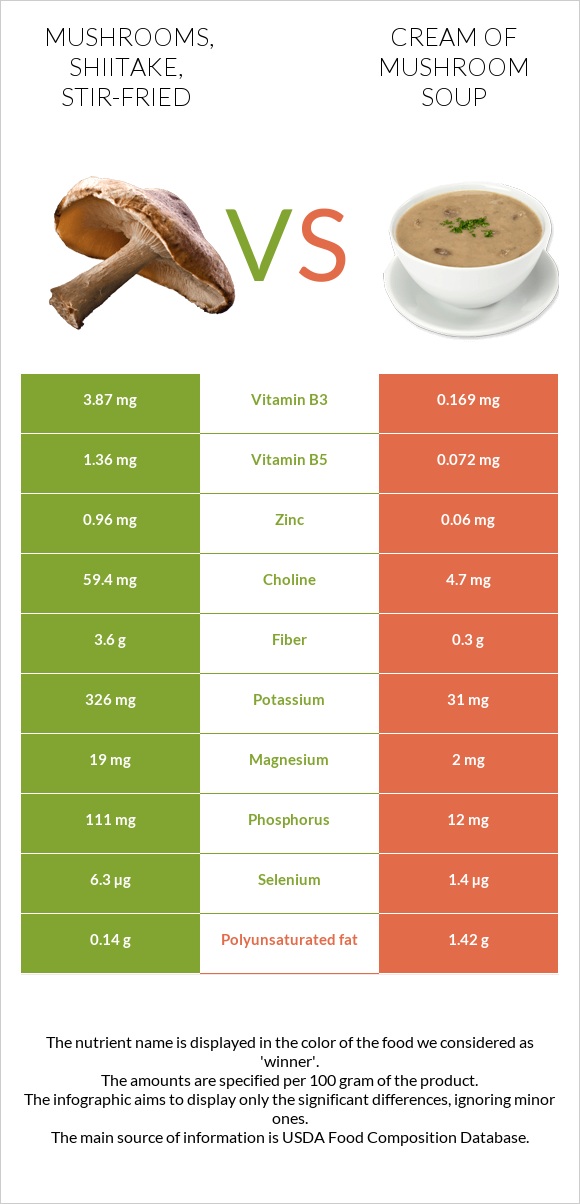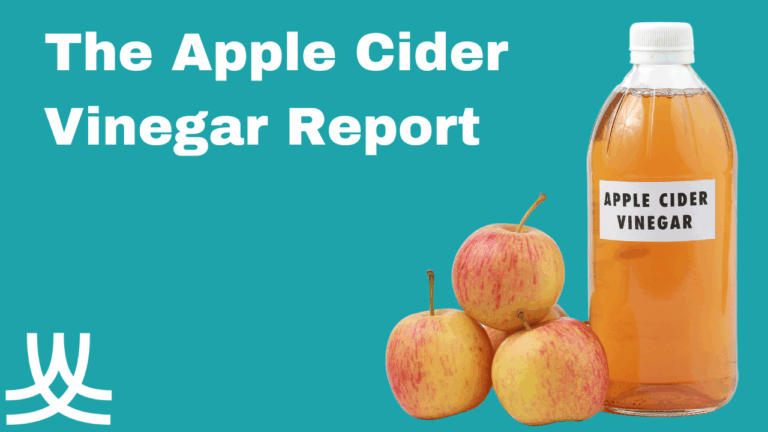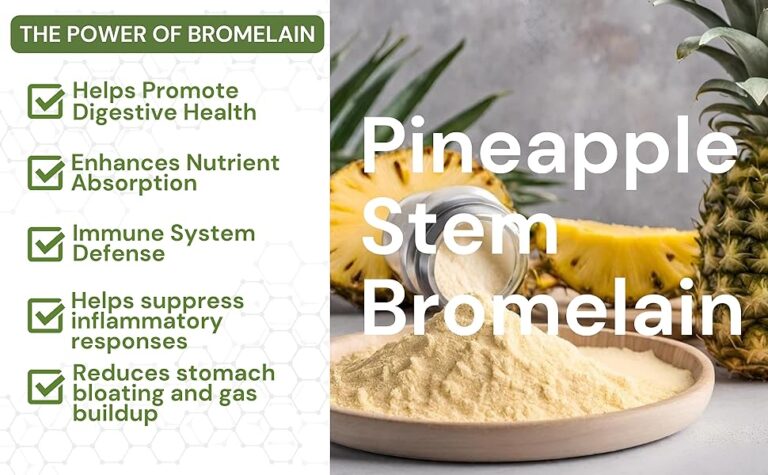The Golden Arc of Wellness: Lowering Your Blood Pressure Naturally with the Humble Banana
The human body, an intricate symphony of biological processes, often whispers warnings before it shouts. Among the most pervasive and insidious of these whispers is hypertension, or high blood pressure – a silent predator that stalks nearly half the adult population globally. It’s a condition that, left unchecked, can lead to devastating consequences: heart attack, stroke, kidney disease, even dementia. For generations, the battle against hypertension has largely been waged in the sterile confines of medical clinics, with prescriptions and lifestyle modifications as the primary weapons. Yet, a growing understanding, fueled by diligent research and a renewed appreciation for nature’s bounty, is revealing powerful allies in unexpected places.
Imagine a journey, not just through the annals of medical science, but through the rich tapestry of human history and the verdant landscapes where life-sustaining foods first emerged. This is a story about a ubiquitous, humble fruit, recognized for its portability and sweetness, yet often underestimated for its profound physiological power. It’s a narrative that culminates in a simple, accessible truth: nature, in its infinite wisdom, has provided us with a powerful tool to manage one of our greatest health challenges. This is the story of the banana, and its pivotal role in naturally lowering blood pressure, thanks to its extraordinary abundance of a vital, often overlooked, electrolyte: potassium.
Our audience, knowledgeable and discerning, understands that health is not merely the absence of disease, but a dynamic state of well-being achieved through informed choices. They seek not just facts, but context, depth, and a narrative that connects the dots between ancient wisdom and modern science. So, let us embark on this journey, unraveling the silent epidemic, uncovering the unsung hero that is potassium, and finally, celebrating the golden arc of wellness offered by the banana.
>
Chapter 1: The Silent Epidemic – Understanding the Murmur of Hypertension
Before we delve into the solution, it’s crucial to fully grasp the problem. Hypertension isn’t just a number on a blood pressure cuff; it’s a chronic elevation of the force exerted by blood against the walls of your arteries. Picture a garden hose: if the water pressure inside is consistently too high, the hose will eventually weaken, fray, and burst. Similarly, your arteries, designed to be flexible and resilient, begin to stiffen and narrow under constant high pressure, leading to a cascade of detrimental effects throughout the body.
The measurement itself, often presented as two numbers (e.g., 120/80 mmHg), tells a critical story. The top number, systolic pressure, reflects the pressure in your arteries when your heart beats, pushing blood out. The bottom number, diastolic pressure, represents the pressure when your heart rests between beats. Both are vital indicators. A reading of 130/80 mmHg or higher is generally considered hypertension, though guidelines can vary slightly across regions and medical bodies.
The insidious nature of hypertension lies in its often symptomless presentation. For many, there are no flashing red lights, no acute pain, no obvious distress signals until significant damage has already occurred. This "silent killer" can stealthily lead to:
- Heart Disease: High blood pressure forces the heart to work harder, thickening its walls and eventually weakening it, leading to heart failure. It also contributes to atherosclerosis, the hardening and narrowing of arteries, which can cause heart attacks and angina.
- Stroke: Weakened blood vessels in the brain can rupture (hemorrhagic stroke) or become blocked by clots (ischemic stroke), leading to brain damage and severe neurological impairment.
- Kidney Disease: The delicate blood vessels in the kidneys are highly susceptible to damage from high pressure, impairing their ability to filter waste from the blood, potentially leading to kidney failure.
- Vision Loss: High blood pressure can damage the tiny, delicate blood vessels supplying the eyes, leading to retinopathy and vision impairment.
- Dementia: Emerging research suggests a strong link between uncontrolled hypertension and cognitive decline, increasing the risk of vascular dementia.
The causes of hypertension are multifaceted, often a complex interplay of genetics and lifestyle. While a family history of high blood pressure certainly increases one’s risk, lifestyle factors are often the most modifiable and impactful. These include:
- Diet: High sodium intake, low potassium intake, excessive consumption of processed foods, saturated and trans fats.
- Lack of Physical Activity: Sedentary lifestyles contribute to obesity and poorer cardiovascular health.
- Obesity: Excess weight puts increased strain on the heart and circulatory system.
- Smoking: Nicotine constricts blood vessels and damages their lining.
- Excessive Alcohol Consumption: Can temporarily raise blood pressure and contribute to long-term hypertension.
- Stress: Chronic stress can elevate blood pressure.
- Certain Medical Conditions: Kidney disease, thyroid problems, and sleep apnea can also contribute.
The global burden of hypertension is staggering, impacting billions and placing immense strain on healthcare systems. While conventional medicine offers powerful pharmacological interventions – diuretics, ACE inhibitors, beta-blockers, calcium channel blockers – these often come with side effects and require lifelong adherence. For many, the desire to explore complementary, natural strategies that address the root causes, rather than merely manage symptoms, is a powerful motivator. It is within this desire for holistic wellness that the true power of dietary interventions, particularly those involving specific nutrient-rich foods, shines brightest.
>
Chapter 2: The Unsung Hero – Potassium’s Role in the Vascular Symphony
Within the intricate biochemistry of the human body, a handful of elements play roles so fundamental that life itself depends upon them. Among these essential players is potassium (K), an electrolyte that often dwells in the shadow of its more notorious counterpart, sodium (Na). Yet, for the knowledgeable individual, understanding potassium’s profound influence on fluid balance, nerve signaling, muscle contraction, and, most critically for our narrative, blood pressure regulation, is to unlock a key to cardiovascular health.
Potassium is a positively charged ion, primarily found inside cells, contrasting with sodium, which is predominantly found outside cells. This delicate balance, maintained by the remarkable "sodium-potassium pump" embedded in every cell membrane, is fundamental to cellular function. This pump actively moves sodium out of the cell and potassium into the cell, consuming a significant portion of our daily energy expenditure.
But how does this microscopic dance translate into a macroscopic impact on blood pressure? The mechanisms are elegantly interconnected:
-
Sodium Counteraction and Excretion: This is perhaps potassium’s most widely recognized role in blood pressure regulation. Modern Western diets are notoriously high in sodium, largely due to processed foods. Excess sodium leads to water retention, increasing blood volume and, consequently, blood pressure. Potassium acts as sodium’s antagonist. It helps the kidneys excrete more sodium through urine, effectively reducing the body’s sodium load and easing the burden on the cardiovascular system. Think of potassium as the body’s natural diuretic.
-
Vasodilation and Arterial Relaxation: Beyond its sodium-balancing act, potassium also directly promotes vasodilation – the relaxation and widening of blood vessel walls. This effect reduces peripheral resistance, making it easier for blood to flow through the arteries and lowering the pressure exerted against them. This direct impact on vascular tone is a critical component of its blood pressure-lowering capabilities. Magnesium, another mineral often found alongside potassium in healthy foods, also contributes to vasodilation, creating a synergistic effect.
-
Nerve Signaling and Muscle Contraction: While not directly about blood pressure, potassium’s role in nerve impulse transmission and muscle contraction (including the heart muscle) is foundational to overall cardiovascular health. Proper potassium levels ensure the heart beats rhythmically and efficiently, preventing arrhythmias that can be exacerbated by electrolyte imbalances.
The problem in modern diets isn’t just an excess of sodium; it’s a chronic deficiency of potassium. Our evolutionary ancestors consumed diets rich in plant foods, yielding a potassium-to-sodium ratio heavily skewed towards potassium. Today, with the proliferation of highly processed foods, that ratio has flipped, creating an imbalance that directly contributes to the prevalence of hypertension. The average adult is recommended to consume around 4,700 mg of potassium per day, yet most fall far short, often consuming less than half of this recommendation.
For a knowledgeable audience, it’s also important to acknowledge the nuances. While increasing potassium intake is generally beneficial for blood pressure, it’s not without its considerations. Too little potassium (hypokalemia) can lead to muscle weakness, fatigue, and heart rhythm abnormalities. Conversely, too much potassium (hyperkalemia) can be dangerous, especially for individuals with compromised kidney function, as their kidneys may not be able to efficiently excrete excess potassium. This can lead to serious heart problems. Therefore, while dietary potassium from whole foods is almost always safe and beneficial, supplementation should always be discussed with a healthcare professional, especially for those with pre-existing conditions or on certain medications. The beauty of obtaining potassium from natural sources, like fruits and vegetables, is that the body is highly adept at regulating its absorption, making hyperkalemia from diet alone exceedingly rare in individuals with healthy kidneys.
Understanding potassium’s multifaceted role transforms it from a mere mineral into a vital conductor in the symphony of cardiovascular health. It’s a nutrient that actively works to maintain the delicate balance necessary for healthy blood pressure, offering a powerful, natural intervention against the silent epidemic.
>
Chapter 3: The Golden Arc – Unpacking the Banana’s Power
With a clear understanding of hypertension and the critical role of potassium, our journey now leads us to the heart of our story: the humble banana. This curved, yellow fruit, a staple in countless households around the world, is far more than just a convenient snack. It is a nutritional powerhouse, a testament to nature’s profound ability to provide simple, effective solutions to complex health challenges.
To truly appreciate the banana, let’s first consider its remarkable journey through history. The banana is believed to have originated in Southeast Asia, specifically Papua New Guinea, around 8,000 to 5,000 BCE. From there, it embarked on an epic voyage, carried by ancient mariners and traders across oceans and continents. Arab traders introduced it to Africa, and Portuguese explorers brought it to the Americas in the 16th century. It became a vital food source in tropical regions, revered for its caloric density and ease of cultivation. Its global dominance, however, truly began in the late 19th and early 20th centuries with the advent of refrigerated shipping and large-scale plantations, transforming it from a regional staple into a ubiquitous global commodity. The banana’s story is one of resilience, adaptation, and cultural integration, underscoring its historical significance long before its specific nutritional benefits were scientifically dissected.
Today, the banana (specifically the Cavendish variety, which dominates global trade) is celebrated for its accessibility, affordability, and, crucially, its nutritional profile. While its potassium content is its star attraction for blood pressure regulation, the banana offers a symphony of nutrients that contribute holistically to cardiovascular health and overall well-being.
Let’s break down the banana’s nutritional marvels:
-
Potassium (The Star): A medium-sized banana (approximately 118 grams) typically contains around 422 mg of potassium. This represents about 9% of the recommended daily intake of 4,700 mg. While one banana won’t single-handedly meet your daily potassium needs, it is an exceptionally convenient and delicious way to make a significant contribution, especially when consumed regularly as part of a balanced diet. Its high bioavailability means the body readily absorbs and utilizes this potassium.
-
Magnesium: Another crucial electrolyte for blood pressure control, magnesium is often found hand-in-hand with potassium. A medium banana provides about 32 mg of magnesium, contributing to muscle relaxation (including smooth muscles in blood vessel walls), nerve function, and energy production. Like potassium, magnesium helps promote vasodilation and can counteract the effects of sodium.
-
Dietary Fiber: Bananas are a good source of dietary fiber, with about 3 grams in a medium fruit. Fiber plays a critical role in digestive health, but its benefits extend to cardiovascular health. Soluble fiber can help lower cholesterol levels, and a high-fiber diet is generally associated with a reduced risk of heart disease and improved blood sugar control, both of which indirectly support healthy blood pressure.
-
Vitamin B6 (Pyridoxine): This vitamin is essential for numerous metabolic processes, including protein metabolism, red blood cell formation, and nervous system function. It also plays a role in regulating homocysteine levels, an amino acid that, in high concentrations, has been linked to an increased risk of heart disease.
-
Vitamin C: A powerful antioxidant, Vitamin C helps protect cells from damage caused by free radicals, which can contribute to inflammation and hardening of the arteries. It also plays a role in collagen formation, essential for healthy blood vessel walls.
-
Resistant Starch (especially in greener bananas): As bananas ripen, their starch content converts to sugar. However, greener bananas are rich in resistant starch, a type of fiber that isn’t digested in the small intestine but ferments in the large intestine. This acts as a prebiotic, feeding beneficial gut bacteria. A healthy gut microbiome is increasingly being recognized for its systemic health benefits, including potential links to cardiovascular health and inflammation reduction.
The beauty of the banana’s profile lies in this synergy. It’s not just the potassium working in isolation; it’s the combined action of potassium, magnesium, fiber, and other micronutrients that contribute to its overall heart-protective effects. This holistic package makes the banana a potent ally in the quest for natural blood pressure management. It underscores the principle that whole foods offer a complex matrix of nutrients that often work better in concert than isolated supplements.
>
Chapter 4: The Science Speaks – Evidence Supporting the Golden Arc
For a knowledgeable audience, anecdotal evidence, while compelling, is rarely sufficient. The power of the banana in blood pressure management is not merely folk wisdom; it is increasingly supported by robust scientific research. The scientific community has long understood the critical role of electrolytes, and particularly the sodium-potassium balance, in maintaining cardiovascular homeostasis.
One of the most significant pieces of evidence comes from the DASH (Dietary Approaches to Stop Hypertension) diet. Developed by the National Heart, Lung, and Blood Institute (NHLBI), the DASH diet is consistently ranked as one of the most effective dietary interventions for preventing and managing hypertension. What characterizes the DASH diet? It emphasizes fruits, vegetables, whole grains, lean protein, and low-fat dairy, while limiting saturated and trans fats, cholesterol, and sodium. Critically, it is rich in potassium, magnesium, and calcium – all minerals abundant in foods like bananas. Studies on the DASH diet have shown significant reductions in blood pressure, comparable to some medications, particularly in individuals with higher baseline blood pressure. The success of the DASH diet is a testament to the synergistic power of a whole-food, plant-forward approach, with potassium-rich fruits like bananas playing a central role.
Beyond the DASH diet, numerous observational studies and meta-analyses have investigated the direct link between dietary potassium intake and blood pressure. For instance:
- A comprehensive meta-analysis published in the British Medical Journal (BMJ), pooling data from multiple studies, concluded that increased potassium intake significantly reduced blood pressure in individuals with hypertension, and also had a modest but beneficial effect in normotensive individuals. The authors noted that a higher potassium intake was associated with a 24% lower risk of stroke.
- The Nurses’ Health Study and the Health Professionals Follow-up Study, two large, long-term prospective cohorts, have consistently demonstrated that higher dietary potassium intake is associated with a lower risk of stroke and cardiovascular disease.
- Research on the physiological mechanisms has elucidated how potassium helps the kidneys excrete sodium and promotes vasodilation, providing a clear biological basis for its effects.
It’s important to frame these findings accurately for a knowledgeable audience. While the evidence is compelling, bananas (or any single food) are not a magic bullet or a replacement for medical care. The science consistently points to the benefits of overall dietary patterns that are rich in potassium from a variety of fruits, vegetables, and whole foods. A banana a day is a powerful step, but it must be integrated into a broader strategy of healthy eating and lifestyle choices.
The journey from observing population health trends to understanding the molecular mechanisms has been a long one, but the scientific consensus is clear: increasing dietary potassium, particularly from natural sources like the banana, is a highly effective, evidence-based strategy for supporting healthy blood pressure and reducing cardiovascular risk. This scientific validation transforms the humble banana from a simple fruit into a clinically relevant tool in the pursuit of wellness.
>
Chapter 5: Integrating the Golden Arc into Your Life – A Practical Blueprint
Having journeyed through the complexities of hypertension, the essential nature of potassium, and the scientific backing for the banana’s role, our story now turns to practical application. For the knowledgeable individual, the goal isn’t just to accumulate information, but to translate it into actionable strategies for better health. Integrating the power of the banana and a potassium-rich diet into daily life is both simple and profoundly impactful.
Dietary Strategies: Embracing the Potassium Powerhouse
The most straightforward way to leverage the banana’s benefits is, of course, to eat them! But beyond simply grabbing one for a snack, consider how to creatively weave them into your dietary tapestry:
- Breakfast Boost: Slice bananas into your oatmeal, sprinkle them over whole-grain cereal, or blend them into a morning smoothie with leafy greens (also potassium-rich!) and berries.
- Smart Snacking: A banana is the ultimate grab-and-go snack – portable, naturally packaged, and satisfying. Pair it with a handful of nuts for sustained energy and added magnesium.
- Dessert Delight: Use mashed bananas as a natural sweetener in baking, or simply enjoy a frozen banana for a healthy, refreshing treat.
- Savory Surprises: While less common, ripe bananas can add a surprising sweetness and depth to certain curries or stews, especially in Caribbean or Southeast Asian cuisine.
However, relying solely on bananas, while beneficial, isn’t the complete picture. A truly potassium-rich diet encompasses a wide array of plant-based foods. Encourage variety to ensure a broad spectrum of nutrients:
- Leafy Greens: Spinach, kale, Swiss chard are packed with potassium and magnesium.
- Root Vegetables: Sweet potatoes, potatoes (with skin), beets.
- Other Fruits: Avocados (exceptionally high in potassium), oranges, cantaloupe, dried apricots, prunes.
- Legumes: Lentils, beans (black beans, kidney beans, cannellini beans).
- Fish: Salmon, tuna (though watch for mercury content).
- Dairy (if tolerated): Milk, yogurt.
The overarching principle is to shift towards a diet rich in whole, unprocessed foods and away from the sodium-laden, potassium-poor processed fare that dominates many modern diets. Focus on the potassium-to-sodium ratio; aim to consume significantly more potassium than sodium.
Beyond the Plate: Holistic Lifestyle Considerations
Dietary interventions are most effective when integrated into a comprehensive lifestyle approach to blood pressure management. For the knowledgeable individual, this means acknowledging the interconnectedness of various health pillars:
- Regular Physical Activity: Aim for at least 150 minutes of moderate-intensity aerobic exercise or 75 minutes of vigorous-intensity exercise per week. Exercise strengthens the heart, helps manage weight, and directly lowers blood pressure.
- Stress Management: Chronic stress can elevate blood pressure. Incorporate stress-reducing practices like meditation, yoga, deep breathing exercises, spending time in nature, or engaging in hobbies.
- Adequate Sleep: Prioritize 7-9 hours of quality sleep per night. Poor sleep can contribute to hypertension.
- Limit Sodium Intake: Be mindful of sodium in processed foods, restaurant meals, and even seemingly healthy packaged goods. Cook at home more often to control ingredients.
- Moderate Alcohol Consumption: If you drink alcohol, do so in moderation (up to one drink per day for women, up to two for men).
- Quit Smoking: Smoking is one of the most significant risk factors for cardiovascular disease and hypertension.
- Maintain a Healthy Weight: Losing even a small amount of weight can have a significant positive impact on blood pressure.
- Regular Medical Check-ups: Continuously monitor your blood pressure and consult with your healthcare provider. Dietary changes are powerful complements to, not substitutes for, professional medical advice and prescribed treatments.
Caveats and Considerations for the Knowledgeable Audience
As previously touched upon, while dietary potassium from whole foods is generally safe and highly beneficial, there are critical considerations, especially for a knowledgeable audience:
- Kidney Disease: Individuals with chronic kidney disease (CKD) must exercise extreme caution with potassium intake. Impaired kidney function means the body cannot efficiently excrete excess potassium, leading to hyperkalemia, which can be life-threatening. If you have kidney disease, always consult your nephrologist or doctor before significantly increasing potassium-rich foods or considering any potassium supplements.
- Medication Interactions: Certain medications, particularly some diuretics (e.g., potassium-sparing diuretics like spironolactone or amiloride) and ACE inhibitors, can affect potassium levels. Your doctor will monitor your potassium levels if you are on these medications. Discuss any dietary changes with them.
- Moderation and Balance: While beneficial, excessive consumption of any single food, even a healthy one, is rarely the best approach. Focus on a balanced, varied diet that incorporates bananas alongside a spectrum of other nutrient-dense foods.
The journey to lower blood pressure naturally is not a sprint; it’s a marathon of consistent, informed choices. The banana, with its golden hue and rich nutritional profile, stands as a beacon on this path, offering a simple, delicious, and scientifically supported way to enhance cardiovascular health.
>
Conclusion: A Simple Solution, A Profound Impact
We began this story by acknowledging the silent, pervasive threat of hypertension and the universal quest for natural, effective ways to reclaim health. We navigated the intricate world of electrolytes, uncovering potassium as an unsung hero, tirelessly working to balance sodium, relax blood vessels, and support the very rhythm of our hearts. And finally, we celebrated the banana – a fruit whose journey from ancient origins to modern ubiquity mirrors its profound, yet often underestimated, power.
The story of lowering blood pressure naturally with the banana is not just about a single fruit or a single nutrient. It is a powerful narrative about empowerment. It reminds us that often, the most potent solutions are found not in complex pharmaceuticals alone, but in the wisdom of nature, in the accessible foods that have sustained humanity for millennia. It is a call to reconnect with our food, to understand its fundamental impact on our physiology, and to make conscious choices that nurture our bodies.
For the knowledgeable audience, this isn’t just a recommendation; it’s an invitation to integrate a deeper understanding of nutritional science into daily practice. It’s about recognizing that every bite we take is an opportunity to contribute to our well-being. The golden arc of the banana, a symbol of natural energy and health, offers a clear, delicious path towards a future with healthier blood pressure and a more vibrant, resilient life. Let us embrace this simple, profound truth and allow nature’s bounty to guide us towards sustained wellness.







